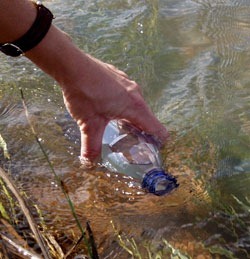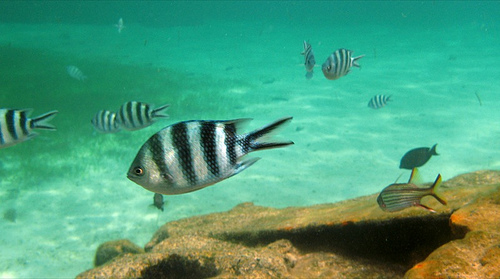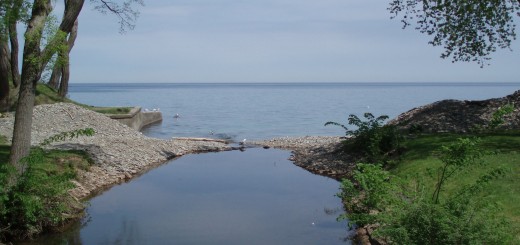Great Lakes restoration “success stories” featured in two new reports
2 The American Recovery and Reinvestment Act and the Great Lakes Restoration Initiative have provided a tremendous amount of funding for Great Lakes restoration projects. To share many of the success stories coming from these efforts, the Healing Our Waters-Great Lakes Coalition has released two new reports with dozens of case studies.
The American Recovery and Reinvestment Act and the Great Lakes Restoration Initiative have provided a tremendous amount of funding for Great Lakes restoration projects. To share many of the success stories coming from these efforts, the Healing Our Waters-Great Lakes Coalition has released two new reports with dozens of case studies.
“Progress and Promise: 21 Stories that Showcase Successful Great Lakes Restoration Projects” provides information on projects that have curbed sewage, confronted invasive species, cleaned up toxic pollution, and restored wildlife habitat.
The report focuses on five geographic regions deemed crucial by the coalition, including the St. Louis River and Bay, western Lake Erie, the Chicago area, the Saginaw Bay watershed, and eastern Lake Ontario.
It details, for example, how Duluth, Minn., along the St. Louis Bay, is “winning the wastewater war.” About 48 million gallons of wastewater from a 530-square-mile area is now processed with a state-of-the-art bio-solids plant, where solid waste is disinfected by heat and microbial activity and eventually converted into fertilizer.
In the western Lake Erie section, one account features the Lake Erie watersnake’s best friend, Kristin Stanford, who has been dubbed “the snake lady” for her efforts to educate locals about the troubled species.
The second report the coalition has announced is called “Faces of Restoration: People Working to Restore the Great Lakes.” It includes several case studies that focus on the job opportunities in a wide range of fields that Great Lakes restoration funding has created.
“In Illinois, Indiana, Michigan, Minnesota, New York, Ohio, Pennsylvania and Wisconsin, people are being put to work to restore wetlands, remove dams and beautify waterfronts,” the Healing Our Waters website notes.
The coalition asserts that these reports ought to serve as proof that the nation’s investment in the Great Lakes is paying off for all those “who depend on the Lakes for their jobs, health and way of life.”
Follow the below links for PDF copies of each report:
“Progress and Promise: 21 Stories that Showcase Successful Great Lakes Restoration Projects”
“Faces of Restoration: People Working to Restore the Great Lakes”
What do you think are the greatest Great Lakes restoration success stories? Share them in the comments below.
New Reports Highlight Successful Great Lakes Restoration Projects [Healing Our Waters – Great Lakes Coalition] Progress and Promise: 21 Stories that Showcase Successful Great Lakes Restoration Projects [Healing Our Waters – Great Lakes Coalition] Faces of Restoration: People Working to Restore the Great Lakes [Healing Our Waters – Great Lakes Coalition]














I’m part of a group of researchers who got funding this year from the EPA’s Great Lakes Restoration Initiative. Our grant is called “Developing Great Lakes Scientific Approaches to Restoration”. We are investigating whether mycorrhizal fungi (beneficial soil fungi) improve success of prairie plants in a prairie habitat at Burnham Park in Chicago. The park is located along Lake Michigan. We planted by hand about 1300 plants in July to begin the experiment. This research has several successes already. First, the community on the South Side of Chicago is getting more native habitat, rather than turf grass. Second, the site is adding habitat for migrating birds and butterflies. Also, several students from DePaul University helped with the planting and are learning how to conduct research by investigating aspects of the project. It would have been very difficult to plant the prairie plants without the students’ help. We might not be able to judge the effects of the soil fungi for a few years, but we are getting several benefits already.
I have lots of pictures of the site and students working there if you are interested.
Hi Sarah, I am certainly interested in seeing the photos and learning more about the project. Perhaps you could send some of the pictures to Dave [at] LakeScientist [dot] com along with any helpful background information, and I could feature the project in an article.